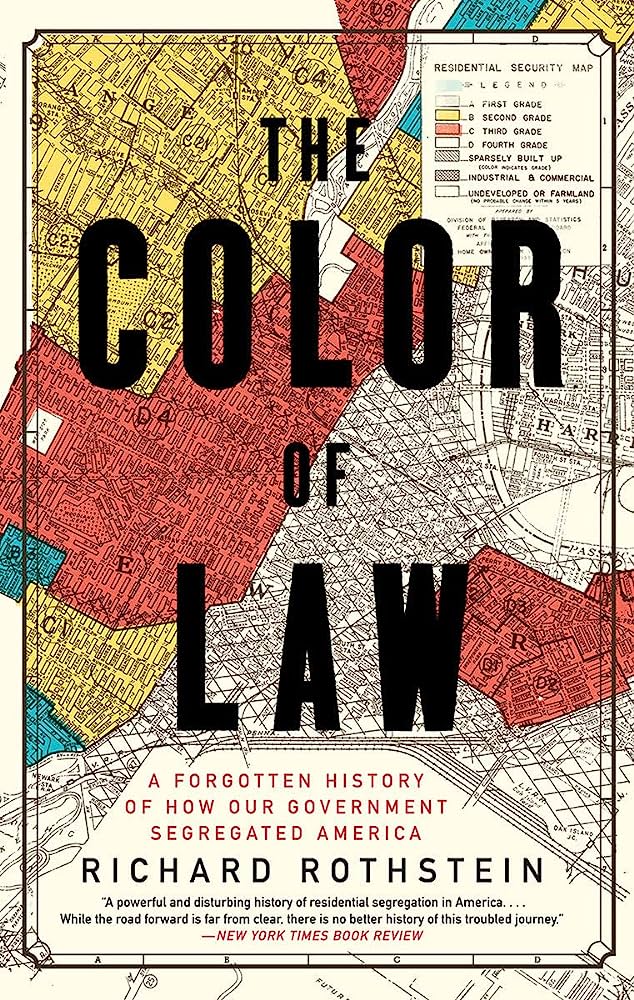The subtitle of The Color of Law is “A Forgotten History of How Our Government Segregated America”. To be more accurate, I think that “Forgotten” should really be replaced with “Untold”. Either way, if you are in any way, shape, or form associated with real estate, this is a must-read.
This was not an easy book to read on two fronts. First, the underlying subject matter is civil engineering, which doesn’t typically make it into the thriller section of the local bookstore. That said, the author does a great job of using real-life stories that keep you interested in the outcome for the affected people in the stories. Second, it is truly appalling content matter. It was amazing to me how at every level of government, in every state in the nation, racism wasn’t just implicit bias used to make decisions. Quite the contrary, it was explicitly written in code, statute, covenant, and law.
I went into this book with an expectation that most of the “action” would have taken place in the post-Reconstruction South. Certainly some of it did, but I was incredibly surprised by how similar it was in Boston, San Francisco, Chicago, Detroit and most of the North. From City Councils to the Supreme Court, the explicit bias towards, predominantly, Black citizens, but also those of other ethnicities and national origins, is almost unbelievable. There were, literally, times when I would stop reading and Google some things to make sure I wasn’t being fooled.
Up until the end, the author does a really amazing job at teaching a very difficult subject matter. If slavery was a scar on the history of the Republic, what came as a result of the actions in this book is like the scab that just won’t heal because people keep picking at it.
So, what do we do? This is where the author lost me. To his credit, he admits openly that his ideas are doomed for failure and likely unrealistic. This is due in part to the monumental task at hand, but really because of our political climate. I think I will say what he probably can’t, and add that it also has something to do with the abject lack of grown-ups in government today. I couldn’t agree more, on all counts. As an advocate for small government and local control, I much prefer the carrot to the stick if the stick is called regulations. There were ideas in the book that were great from an incentive-driven perspective. There were ideas in the book that also made me want to pull out a copy of the Constitution and mail it to the author. The point is, though, it is nearly impossible to undo. All we can do, moving forward, is make sure that it doesn’t happen again and that all Americans are treated fairly under the law.
You should definitely read this book no matter what you do for a living. You should have to read this book if you are in the real estate industry.
Post-Script: After I wrote this review, a thought occurred to me. With the recent requirement of the National Association of Realtors to include Fair Housing training for its membership, I think that it presents an amazing opportunity to use a book like this to take a look backwards before we look forward. As Realtors, we are not the greatest at telling the history of how we got to the problems we face. It makes sense. Not only is our involvement in this history ugly, but we are, by our nature, problem solvers. So, it is our natural inclination to look at a problem facing us today and just go fix it. With so many new licensees nationwide, it makes sense for everyone to understand the past so we can apply its lessons to the future. That’s just my opinion.
Find this book and others on my Reading List. Subscribe to get posts delivered straight to you.

